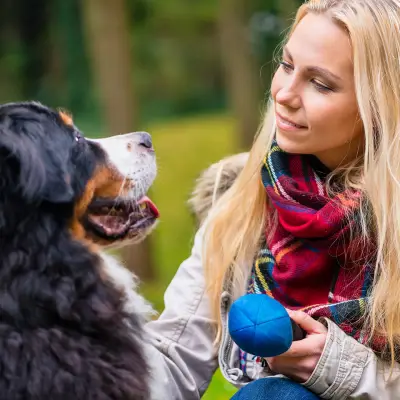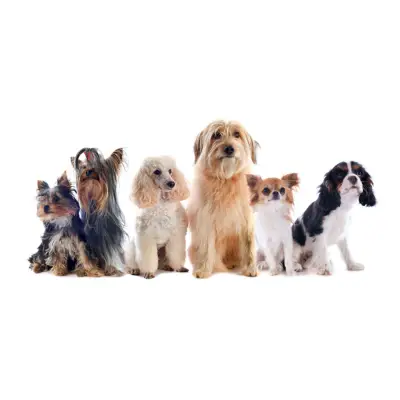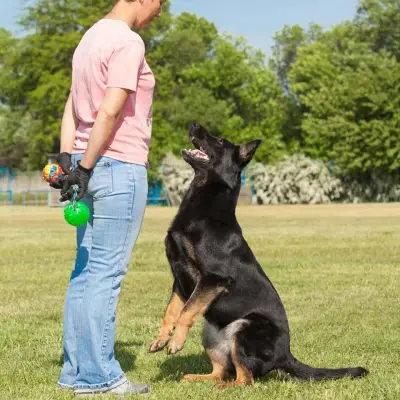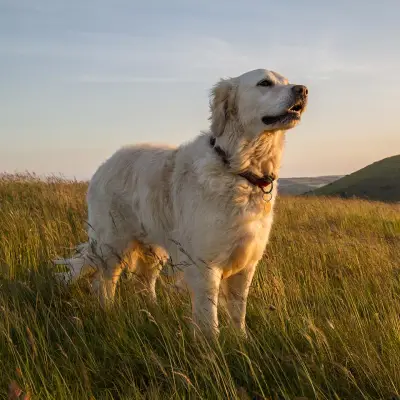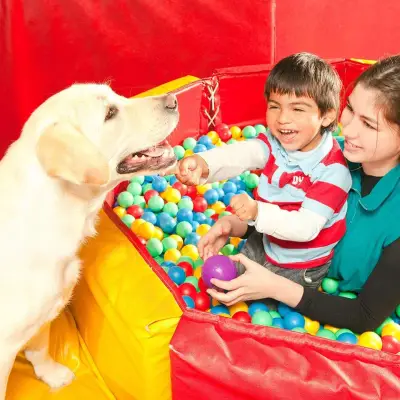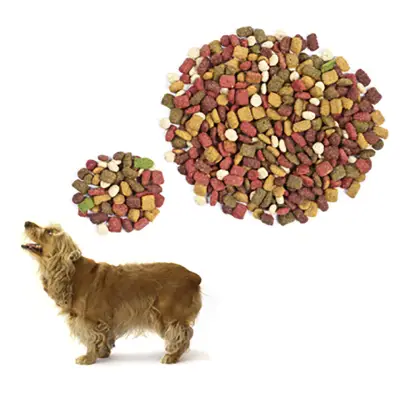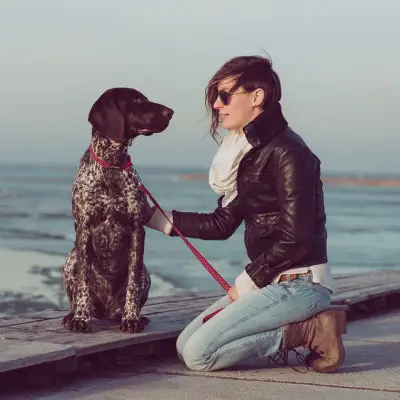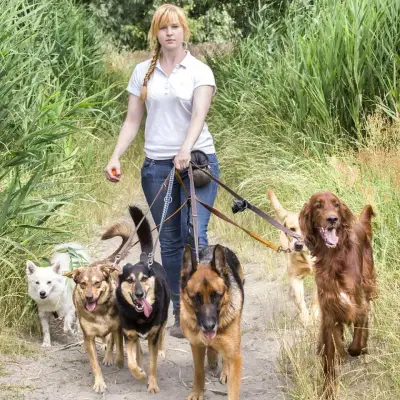While it might seem harmless, even endearing, at first, a dog jumping up can quickly become a nuisance, especially when guests are involved or your pet starts knocking people over. It can even be dangerous for children or older people.
Whether you're dealing with an excitable puppy or a full-grown dog who still hasn’t kicked the habit, this guide will help you understand why dogs jump up, and more importantly, how to train your dog not to jump.
Jump to:
Recommended for you!
Best SellersWhy Do Dogs Jump Up?
Dogs don’t jump up to annoy you; they do it because it’s instinctive. In the dog world, greetings often involve face-to-face interaction. When your dog jumps, they’re trying to get closer to your face to say hello. It’s their way of showing affection or excitement.
This behaviour is especially common in puppies, but it can carry into adulthood if not properly managed. Often, it’s also reinforced by us; even a push or shout can feel like attention to your dog, and attention is usually what they want.
Why It’s Important to Stop Dog Jumping
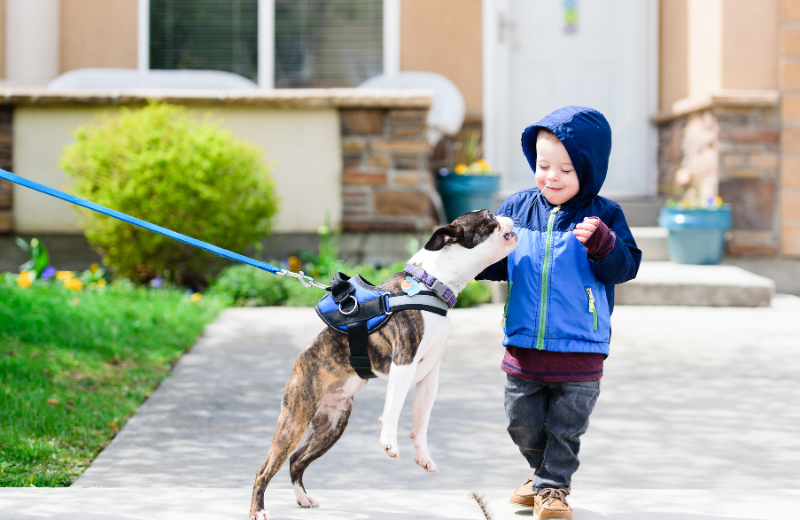
While a bouncing dog might seem harmless at first, it can create a number of issues:
- Safety concerns – Children or elderly guests can be knocked over or scratched.
- Stress for others – Not everyone is comfortable with dogs jumping on them.
- Reinforced bad habits – Dogs that get attention from jumping will keep doing it.
- Aggressive behaviours – In some cases, jumping may escalate into biting during excitement.
If your dog jumps up and bites, lunges at strangers, or shows signs of overexcitement around visitors, it’s a behaviour that needs to be addressed before it worsens.
How to Stop a Dog Jumping Up at People
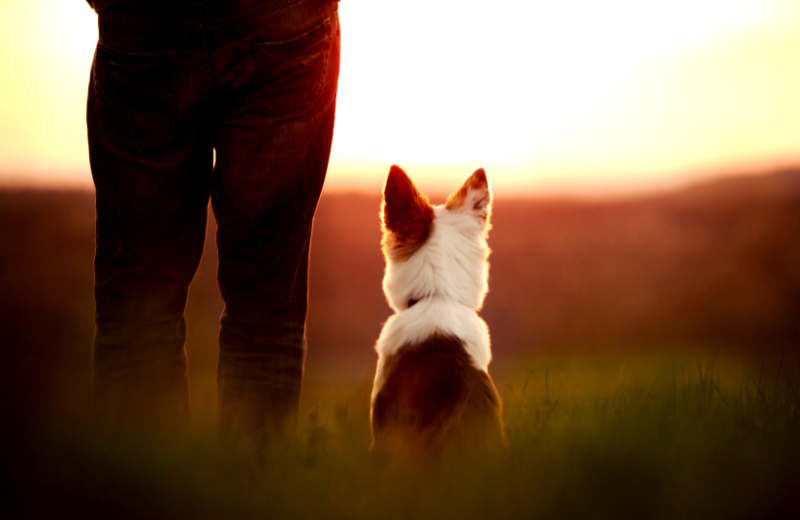
1. Ignore the Jumping
This might sound too simple, but dogs often jump to get attention. If you look at, talk to, or touch your dog when they jump, even to push them away, you’re reinforcing the behaviour. Here’s how to respond instead:
- The moment your dog jumps, turn away and avoid eye contact.
- Say nothing. Don’t touch them.
- Wait until all four paws are on the floor.
- When they’ve calmed, praise or reward with attention, treats or a toy.
It takes patience, but over time your dog learns that jumping gets them nothing, while staying calm earns rewards.
2. Teach an Alternative Behaviour
The best way to stop a behaviour is to replace it with something else. In this case, the command “sit” is ideal.
- Train your dog to sit reliably.
- Practice asking them to sit before greetings, treats or walks.
- Reward them for staying seated during greetings.
- If they jump instead, end the interaction and try again later.
Eventually, your dog will realise that sitting gets attention; jumping does not. This method is especially helpful for training dogs not to jump on people when excited.
3. Manage Greetings with Visitors
One of the most common problems is dogs jumping up at visitors. The doorbell rings, excitement builds, and before you know it, your dog’s bouncing around like a spring. Here’s how to manage it:
- Keep your dog on a lead when visitors arrive.
- Ask for a “sit” before they’re allowed to greet.
- If they jump, guide them away and wait before trying again.
- You can also use baby gates or crates during the early stages of training.
Consistency is key. Practice with friends or family before expecting perfect behaviour with strangers.
4. Reinforce Calm Behaviour Every Time
The more often your dog experiences success, the faster they’ll learn. That means reinforcing calm behaviour consistently:
- Reward calm behaviour, even when no one’s at the door.
- Use treats, praise or a favourite toy when they greet politely.
- Practice during walks — ask for a sit before they greet others.
- Let others know your training goal, so they don’t reward jumping.
Ask visitors to follow the same rules. A quick “Please ignore him if he jumps” helps keep your training on track.
Helpful Tools and Equipment
You might be wondering if there’s a special harness or collar that can stop a dog from jumping. While no single tool will train your dog for you, the right equipment can support your efforts and make training more manageable.
- Front-clip harnesses – These give you greater control during walks and help redirect your dog’s movement, making it easier to manage overexcited behaviour.
- Short training leads – Useful for keeping your dog close during greetings and reducing their ability to jump up at people.
- Treat pouches – Allow for quick, consistent rewards during training, especially when teaching calm behaviours like sitting or staying.
Outdoor Control: Walks and Public Settings
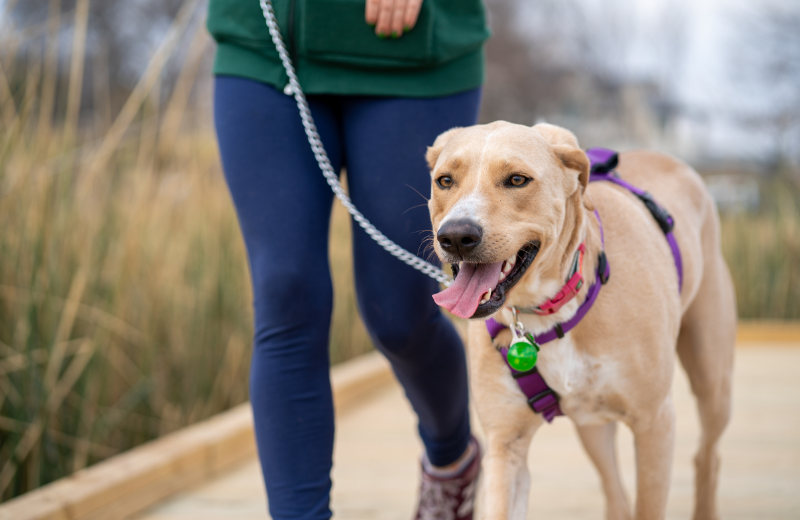
One of the trickiest challenges dog owners face is managing jumping during walks. You might pass a friendly stranger, and your dog leaps up in excitement to greet them. While this behaviour is often driven by enthusiasm, it can be unsettling for others and potentially dangerous if your dog is large or strong.
To prevent this, keep your dog on a short, loose lead so you have better control. Ask for a “sit” before allowing them to approach anyone.
Don’t let your dog greet people unless they’re calm, and that includes making sure they’re not pulling on the lead, whining, or bouncing in place. It’s helpful to start in quieter areas where there are fewer distractions and gradually work your way up to busier environments.
Teaching a simple “watch me” command can also redirect your dog’s focus back to you in tempting situations. If your dog is also lunging or barking at strangers, it may indicate a need for broader training around impulse control or reactivity.
Puppy-Specific Tips
Stopping a puppy jumping up takes a bit more repetition, as puppies are naturally excitable and haven’t yet learnt impulse control. Try these techniques:
- Begin training early. Puppies learn quickly!
- Keep greetings low-key — avoid exciting squeals or high-energy praise.
- Practice short training sessions with rewards for calm greetings.
- If your puppy is also biting, redirect their mouth to a chew toy or use a firm “no”.
Recommended for you!
Best SellersWhat About Disciplining a Dog for Jumping?
It’s important to think of discipline not as punishment, but as guidance. The goal isn’t to make your dog afraid, but to teach them what behaviour is acceptable and what isn’t.
When your dog jumps, remove the reward by turning away or ending the interaction. Withhold greetings or affection until they behave calmly. At the same time, focus on teaching and rewarding the behaviour you do want, such as sitting or standing quietly. Avoid harsh corrections like shouting or kneeing your dog in the chest.
These methods can confuse or frighten your dog, damaging the trust you’ve built. Instead, stick to consistent training and positive reinforcement. It may take time, but calm, clear communication is far more effective than punishment.
If Jumping Turns to Aggression
While many dogs jump simply out of excitement, some may escalate into behaviours that feel more aggressive. If your dog starts jumping up and biting, lunging at strangers, or reacting negatively to visitors, it’s time to consider getting professional help.
These behaviours can be a sign of stress, fear, or overstimulation, and they need to be addressed carefully. A qualified behaviourist or dog trainer who specialises in positive reinforcement can work with you to identify the triggers behind your dog’s actions and create a tailored plan.
Don’t be discouraged if your dog struggles in these situations. It doesn’t mean you’ve failed as an owner; it simply means your dog needs more support, structure, and reassurance. With the right guidance, even challenging behaviours can be transformed.
Study Our Dog Training Diploma for £29
If you're ready to deepen your understanding and become a confident, knowledgeable trainer, consider taking the Dog Training Diploma Course with Centre of Excellence. Whether you're a dog owner, aspiring trainer, or simply passionate about canine behaviour, this course offers comprehensive guidance suitable for all levels. And right now, you can enrol for just £29.

